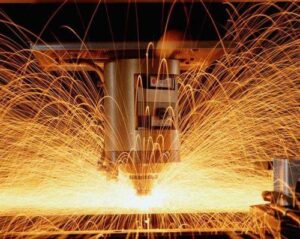Common sense that you must know when doing sheet metal processingAfter the drawing is received, choose different blanking methods according to the different opening drawings and batches, including laser, CNC punching, shearing, molds, etc., and then make the corresponding opening according to the drawing. Place the worktable next to the CNC and the laser cutting, which is conducive to placing the sheet on the machine for processing and reducing the workload of lifting the board. Some usable side materials are placed in designated places to provide materials for trial molds during bending. After the workpiece is blanked, the corners, burrs, and contacts should be trimmed (grinding) as necessary. The tool contacts should be trimmed with a flat file. For workpieces with larger burrs, use a grinder to trim, and the small inner hole contacts should be trimmed. Use the corresponding small file to trim to ensure the beautiful appearance. At the same time, the trimming of the shape also ensures the positioning during bending, so that the position of the workpiece on the bending machine during bending is consistent, and the size of the same batch of products is consistent.
After the blanking is completed, it enters the next process, and different workpieces enter the corresponding process according to the processing requirements. There are bending, riveting, flanging and tapping, spot welding, convex hull, and segment difference. Sometimes the nut or stud should be pressed after one or two bends. Among them, the convex hull and segment difference of the mold should be considered. Process first to avoid interference in other processes after processing first, and the required processing cannot be completed. When there are hooks on the upper cover or lower shell, if they cannot be touch-welded after bending, they must be processed before bending.

The workpiece must be surface treated after the bending, riveting and other processes are completed. The surface treatment methods of different plates are different. After high speed machining, the surface is generally electroplated. After the electroplating is not sprayed, the phosphating treatment is used. After chemical treatment, spray treatment is required. The surface of the electroplated board is cleaned, degreased, and then sprayed. The stainless steel plate (with mirror panel, fog panel, and wire drawing board) can be drawn before bending. No spraying is required. If spraying is required, it needs to be roughened; aluminum plates are generally oxidized, and different colors can be selected according to different spraying colors. Oxidized background color
Commonly used are black and natural color oxidation; aluminum plate needs to be sprayed after chromate oxidation treatment. Surface pretreatment can make the surface clean, significantly improve the adhesion of the coating film, and can double the corrosion resistance of the coating film. The cleaning process first cleans the workpiece, first hangs the workpiece on the assembly line, first passes through the cleaning solution (alloy degreasing), then enters the clean water, then passes through the spray area, then passes through the drying area, and finally removes the workpiece from the assembly line Remove.
These are the general procedures for sheet medical machining The work is very simple, but sometimes it is a bit difficult to do. To make a level and quality sheet metal product, it is not just a matter of talking, but a large amount of work is needed. The practical operation of the sheet metal platform can only be realized by comprehension.


Post a Comment
Note: Only a member of this blog may post a comment.